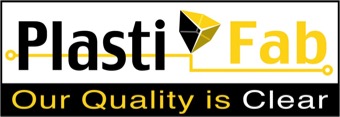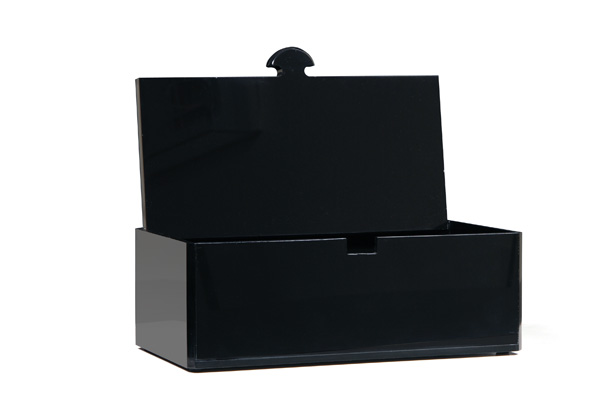Here at Plasti-Fab, plastic bonding is something we do everyday. We can join plastic components together using a variety of bonding methods. Solvent Cementing is the most popular by far and is most commonly used on Acrylic, Lexan a well-known Polycarbonate brand, ABS, Styrene and Sintra. We also use Thick 2 part adhesives and structural epoxies. Plasti-Fab can even utilize a wide variety of U.V. Cements with several U.V. Curing Systems from Dymax. When necessary we are also able to permanently bond parts with state of the art Branson Ultrasonic Welders as well as a hand held UltraSonic Welder. Having all of these choices lets our team of designers, Degreed Engineers and skilled shop personnel select the correct method of bonding to meet the needs of our clients.
Solvent Bonding can be very quick and efficient in some applications and can be quite labor intense on other applications. When used on Acrylic it can provide a strong durable bond with an excellent appearance. There can be gaps and bubbles in the joints that do not detract from the finished parts appearance when the joints are on thinner sheets such as 1/8” and ¼” for example. These problems are usually caused by poor quality fit between the 2 pieces being bonded or from a poor quality plastic bonding surface or table. On thicker sheet joints these same gaps and bubbles can be very distracting from the clear body of the piece. Fortunately there are a few things that we can do to help minimize or even eliminate these issues. Plasti-Fab uses high end CNC machines and state of the art techniques to ensure that the parts we are bonding have the tight tolerance fit required for the best possible glue seems. Plast-Fab has also invested heavily in 7 massive surface plates to ensure that we always have a perfectly flat surface needed for the highest possible bond quality. Pre drying material and controlling temperature and humidity can also greatly improve the appearance and quality of a glue seam.
Most plastics are not clear and therefore the beauty of the glue seam is not a critical as it becomes on Acrylic. ABS, Styrene and EPVC all bond extremely well using the solvent bonding method and have few if any of the aesthetic requirements of clear Acrylic. Solvent bonding of these materials is a fast, efficient and cost effective method for permanent joints.
Sonic Welding is less common in Fabrication Shops because of the expense of the equipment required to perform the weld. This process can be extremely fast with a typical bond taking less than 5 seconds. While some parts can simply be Stake Welded other parts may require a custom Horn to be produced in order to create the exact weld needed. A common example of Stake Welds that many people will recognize are on the plastic Postal Bins that are fabricated out of a fluted plastic called Coroplast. These welds can be a bit unsightly but for rugged tough products you can’t beat a Sonic Stake Weld.
U.V. Bonding does not work with many plastics but can be great for bonding glass to glass and glass to metal. It can work with some plastics especially when the part being bonded can be potted in or where the seam can have a large glue fillet. The seams are very clear, attractive and strong. U.V. Plastic Bonding can be expensive due to the high cost of the special U.V. Adhesives needed for each specific application. U.V. Bonding works best on clear materials so that the Light Rays that activate and cure the adhesive can penetrate the actual material and reach the adhesive in the seam.
With over 30 years in business Plasti-Fab has vast experience with all of these bonding methods on a vast array of substrates that we draw from to offer the best solution to meet our clients most demanding requirements. Let us put that experience to work to solve your plastic bonding or assembly challenge.

